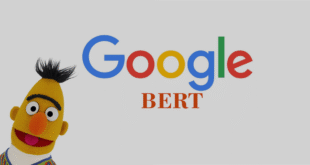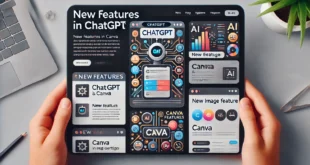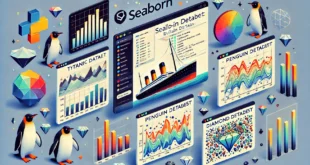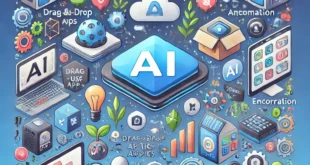In recent years, generative AI—a subfield of AI concerned with content generation—has achieved tremendous progress. Industries, academics, and consumers have all been enthralled by this technology’s ability to generate text, images, music, and video. The way we think about design, creativity, and problem-solving will be impacted by its rapid progress, as will our interactions with technology.
Generative AI: What Is It?
Models that can generate new material by learning patterns from existing data are known as generative AI. These models can produce a wide variety of outputs, including text, graphics, audio, and video, and they are trained on massive datasets. Generative AI seeks to mimic human creativity by creating unique synthetic content, as opposed to standard AI’s concentration on classification and prediction.
Popular applications of generative AI include:
- OpenAI’s Generative Pre-trained Transformer (GPT): A model for natural language processing that can produce writing that sounds natural. For example, given instructions, GPT-3 may produce literary works, code, and articles.
- DALL·E: Another model developed by OpenAI, capable of generating visual representations based on textual descriptions. It is a perfect illustration of how AI can combine visual arts with language.
- StyleGAN: A generative model created by NVIDIA that can generate remarkably lifelike pictures of landscapes, animals, or human faces, frequently making them look identical to actual photographs.
- Jukedeck: An artificial intelligence system that creates musical compositions according to user-specified parameters including tempo, mood, and genre.
Generative AI in Action
- Text Generation: OpenAI’s GPT-4 and similar tools can produce text that sounds natural, opening the door to chatbots, automated content generation, and customized customer care. There will be a literary explosion due to generative AI’s ability to help with novel, news story, and poetry composition.
- Image and Video Creation: Users may now create realistic images, designs, and animations with just textual cues using AI technologies such as DALL·E, Stable Diffusion, and Runway ML. As a result of these innovations, experts in the fields of graphic design, advertising, and content development no longer require a high level of artistic training to create visually appealing work.
- Music Composition: Amper Music and OpenAI’s MuseNet are two examples of AI music generators that can create complete musical compositions across different genres. Background scores and jingles are made with these tools more and more often by producers, artists, and even film studios.
- Deepfake Technology: Generative AI is also employed in the creation of deepfakes, which are videos that appear realistic but actually make individuals say or do things they did not. Ethical questions have been raised by this technology, but it also demonstrates the enormous potential of AI to create very realistic simulations.
- Gaming Development: New stages, characters, and even gaming worlds are being designed using AI-generated material. Improved player experiences can be achieved through the use of AI-powered systems, which can generate random components that provide variety to the game.
The Emergence of Generative AI and the Research That Supports It
- “Attention Is All You Need” (Vaswani et al., 2017): The foundation of most recent generative models, including GPT-3, is the Transformer architecture, which was introduced in this seminal study. This model’s substitution of self-attention processes for recurrent neural networks shook up the field of natural language processing. Read the paper here.
- “Generative Adversarial Networks” (Goodfellow et al., 2014): GANs laid the groundwork for creating incredibly realistic visuals, audio, and video. By training a generator and a discriminator in a competitive context, GANs encourage the generator to produce more lifelike content. Read the paper here.
- “DALL·E: Creating Images from Text” (Ramesh et al., 2021): Introduced in this research article by OpenAI is DALL·E, a model capable of producing high-quality images based on textual descriptions. The creative industries stand to benefit greatly from this model’s capacity to comprehend and depict textual inputs. Read the paper here.
- “BERT: Pre-training of Deep Bidirectional Transformers for Language Understanding” (Devlin et al., 2018): State-of-the-art outcomes in several natural language processing tasks were achieved by BERT (Bidirectional Encoder Representations from Transformers), a model that is transformer-based. The development of AI systems that can generate relevant and coherent text has relied heavily on BERT, even if it is not as generative as GPT. Read the paper here.
Online Platforms and Software Driving the Growth of Generative AI
Businesses, developers, and creatives now have easier access to generative AI thanks to several websites, platforms, and tools. A few of the best-known ones are these:
- OpenAI (“GPT,” “DALL·E,” and “Codex”): The generation of content has been transformed by OpenAI’s suite of generative models. In the field of generative AI, OpenAI is leading the way with models such as GPT-3 for text production, DALL·E for image creation, and Codex for code generation.
- Runway ML: Runway ML is an artistic toolbox that gives people access to several generative models that have already been trained. Users may include AI into their projects and produce high-quality video, images, and text without needing much technical knowledge.
- Artbreeder: This software lets users create and combine images using GANs. Artists and designers frequently employ it to blend various aspects in order to create new personalities, sceneries, and artwork.
- Stable Diffusion: An open-source approach for generating high-quality images from text descriptions, Stable Diffusion has become popular. Users can get it through a number of channels, including Automatic1111 and DreamStudio.
- Amper Music: Ads, video games, and personal projects are just a few of the many uses for Amper Music’s AI-generated music. Content creators will love it because it lets them personalize tracks according to emotion, style, and instruments.
- DeepArt: By combining neural networks with art, DeepArt employs artificial intelligence to transform photographs into works of art reminiscent of well-known painters. If you want to make art out of ordinary photos, this is the tool for you.
Where Generative AI Is Headed
Generative AI has enormous promise for the future and could find uses in any sector of the economy. Ethical concerns, biases in AI-generated content, and copyright difficulties are remain obstacles, despite the fact that its skills are constantly improving. Responsible use of AI will necessitate the establishment of regulatory frameworks and standards as AI models grow in capability and accessibility.
Companies are seeking individuals with expertise in artificial intelligence (AI), machine learning (ML), and data science (DS) to construct and oversee generative AI systems, which is creating new career possibilities. A new era of limitless innovation has dawned with the advent of generative AI, which brings together technology and creativity.
Generative AI’s creative potential is shaping the future, as we keep exploring and pushing the limits of AI’s capabilities. To keep up with the ever-shifting scene, it is crucial to comprehend and utilize this technology, regardless of whether you are a writer, artist, game developer, or company leader.
Conclusion
When it comes to creativity, innovation, and problem-solving, generative AI is here to stay, not merely a fad. It has become an essential tool in many fields because to its wide range of uses, including text generating, image creation, music composition, and more. We may anticipate that generative AI’s capabilities will grow in tandem with the development of new models, platforms, and research papers, drastically altering the digital landscape and opening up exciting new avenues of creativity.
 AI Generated Apps AI Code Learning Technology
AI Generated Apps AI Code Learning Technology



